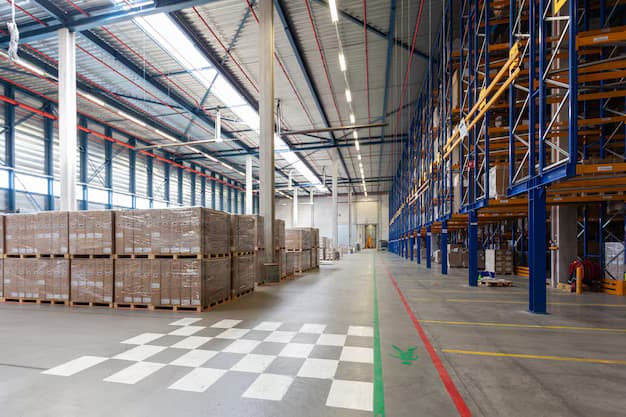When it comes to optimizing warehouse space and improving inventory management, a drive in pallet racking system is often a favored solution among businesses. This innovative system is designed to maximize storage efficiency while ensuring ease of access to goods. However, selecting the right system for specific business needs requires careful consideration of several factors. This article delves into the essential aspects businesses should evaluate when choosing a drive-in pallet racking system, ultimately guiding them towards making an informed decision.
Understanding Drive-In Pallet Racking Systems
Drive-in pallet racking systems are engineered to allow forklifts to enter the racking structure for loading and unloading pallets. This unique design maximizes vertical space, making it an ideal option for businesses with high-density storage requirements. In traditional racking systems, each pallet is accessible from the front, which can consume valuable warehouse space. In contrast, the drive-in system allows for multiple pallets to be stored in a single bay, significantly increasing storage capacity.
Businesses often find this system particularly advantageous for bulk storage of homogeneous products. By utilizing a last-in, first-out (LIFO) inventory management approach, companies can efficiently manage stock rotation and improve overall workflow. As warehouses continue to evolve, the demand for space-saving solutions like drive-in pallet racking systems is on the rise.
Assessing Your Storage Needs
Before committing to a specific drive-in pallet racking system, businesses must conduct a thorough assessment of their storage needs. This involves evaluating the types of products being stored, their dimensions, and the frequency of access required. Understanding the nature of the inventory is critical; for instance, perishable goods may necessitate more frequent access than non-perishable items.
Additionally, businesses should consider the overall volume of inventory they plan to store. High-density storage systems work best when there is a significant amount of product to manage. If a company has a diverse range of products with varying sizes, it may need to explore configurations that allow for flexibility in storage. This assessment forms the foundation for determining the most suitable drive-in pallet racking system.
Evaluating Space and Layout
The physical layout of the warehouse plays a crucial role in the selection of a drive-in pallet racking system. Businesses must measure the available space, taking into account the height, width, and depth of the storage area. A well-planned layout can enhance accessibility and improve overall efficiency.
When installing a drive-in pallet racking system, it is vital to ensure that there is sufficient aisle space for forklifts to maneuver safely. Overcrowding can lead to accidents and delays, ultimately hindering productivity. Therefore, businesses should collaborate with warehouse design experts to optimize the layout, ensuring that the drive-in racks fit seamlessly into the existing infrastructure.
Considering Safety and Compliance
Safety is paramount in any warehouse environment. As businesses explore drive-in pallet racking systems, they must prioritize safety features and compliance with industry regulations. This includes ensuring that the racking system meets structural integrity standards and is equipped with safety accessories, such as guardrails and safety barriers.
Moreover, training employees on how to operate equipment safely around the drive-in pallet racking system is essential. Proper training programs not only enhance safety but also improve operational efficiency. Businesses should work closely with racking system providers to understand the safety features available and ensure that their implementation aligns with best practices.
Customization and Flexibility
One of the significant advantages of drive-in pallet racking systems is their potential for customization. Businesses often have unique storage requirements, and a one-size-fits-all solution may not suffice. Customization allows companies to tailor the racking system to their specific needs, whether that involves adjusting the height, width, or configuration of the racks.
Flexibility is another crucial factor. As businesses grow and evolve, their storage needs may change. The ability to modify the drive-in pallet racking system to accommodate new products or shifts in inventory management strategies can greatly enhance long-term value. Investing in a system that offers scalability will ensure that businesses remain agile in a constantly changing market.
Implementation and Maintenance
Once a business has chosen the right drive-in pallet racking system, the next step involves implementation. Proper installation is vital to ensure the system functions as intended. Engaging professionals who specialize in racking installation can mitigate the risk of errors and ensure compliance with safety regulations.
Additionally, ongoing maintenance is crucial for the longevity of the racking system. Regular inspections and servicing can identify potential wear and tear before it escalates into significant issues. Businesses should establish a maintenance schedule to keep the drive-in pallet racking system in optimal condition, thereby protecting their investment in the long run.
Conclusion
In conclusion, selecting the right drive-in pallet racking system is a multifaceted process that requires careful evaluation of various factors, including storage needs, warehouse layout, safety compliance, and customization options. By considering these elements, businesses can make informed decisions that align with their operational goals. For companies looking to enhance their warehouse efficiency and storage capacity, engaging with experts in the field is crucial. At Dalvie Systems, professionals are ready to assist businesses in navigating the complexities of drive-in pallet racking systems, ensuring they find the perfect solution tailored to their unique requirements.

